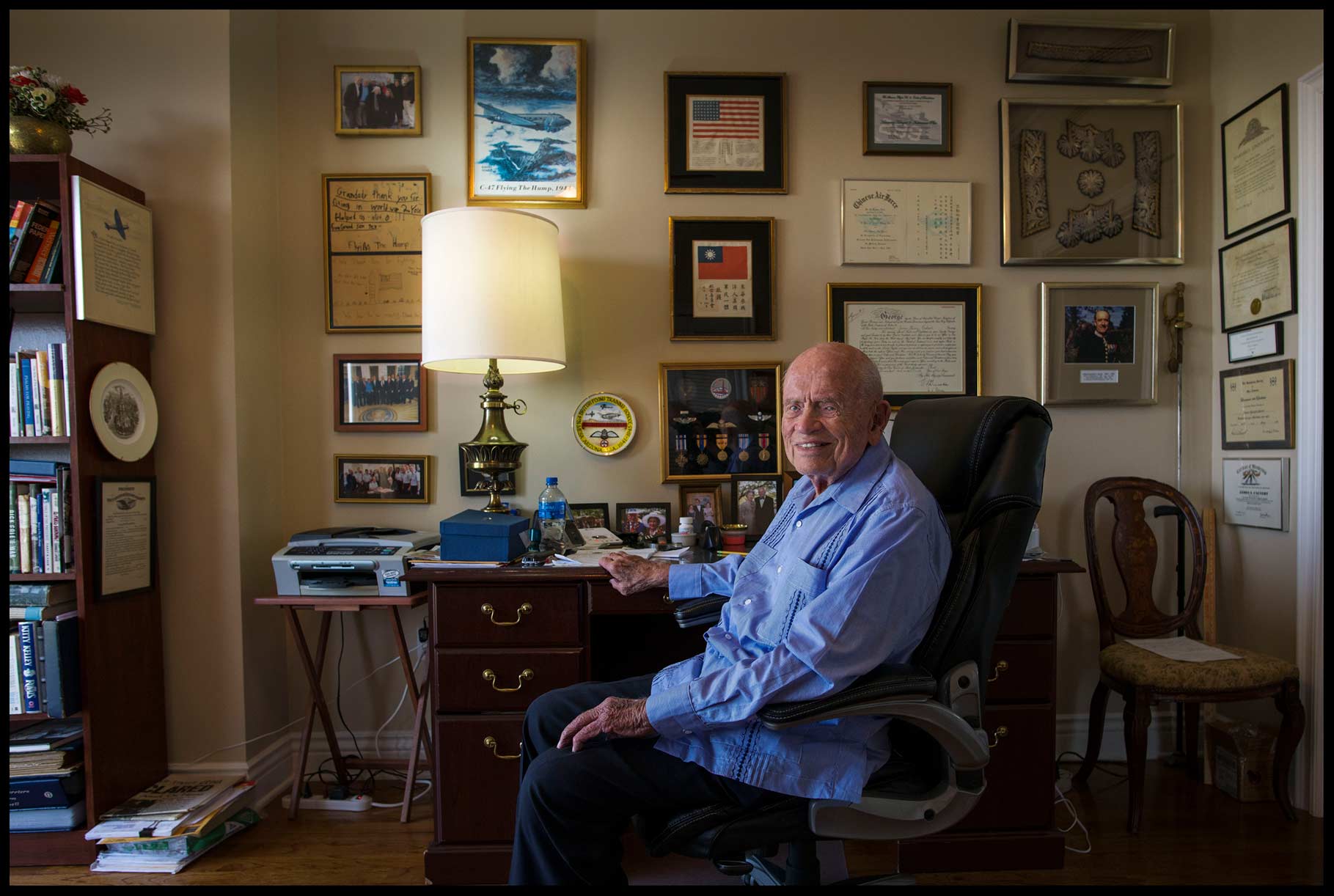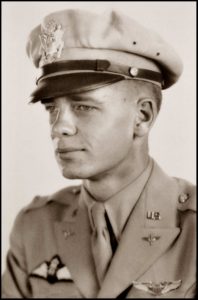
Jim Calvert
Flew C-47 over
Eastern Hump
Jim Calvert
First Lieutenant
Army Air Corps, 1941-1949
1stLt Jim Calvert
New York, 1945We gradually lost altitude and air speed as the ice built up. The pilot said we’d better get our chutes on; we may have to get out and walk.
I was born in Cambridge, Massachusetts in 1924 and grew up in San Antonio. My father came here from England after WWI to learn the department store business. I went to high school at Texas Military Institute and graduated in 1941. I was in my freshman year at Princeton when the war broke out, and I volunteered for the Air Corps Reserves.
I learned to fly in high school. I went to a British flying school in Arizona. They worked out an arrangement to open four RAF training schools in this country. I got my commission in June, 1943. My first action was at Great Falls, Montana with part of the air transport command. I had one very interesting trip to Alaska. It was a C-47 that had Russian markings on it. We were furnishing equipment to the Russians and the guys in Great Falls would fly C-47s to Fairbanks and the Russians would pick them up.
Overseas, I was initially assigned to Dum Dum Airfield near Calcutta, India. Then I went to Kunming, China, which was the eastern terminus of the Hump route. Our unit did some Hump flying, but most of our flying was in China itself, supplying the 14th Air Force and Chinese armies.
That assignment lasted about ten months from late 1944 through 1945. I was fortunate that the routes I was flying had decent weather. My only real narrow escape was when we got iced up one night over a mountainous area. I was still flying copilot then. We gradually lost altitude and air speed as the ice built up. The pilot said we’d better get our chutes on; we may have to get out and walk. I went back to get ready to take the doors off the plane. All of a sudden, the pilot rang the bail out bell and I thought, ‘Here we go.’ After a few minutes when no one came toward the back, I went up front to see what was going on. The ice was starting to melt off the windshield. We were down to 10,000 feet and 80mph in a plane that quits flying at 65mph. It was the only time I ever had a mechanical problem in a C-47.
There were a couple of unusual missions. We evacuated the 14th Air Force from Central China in November, 1944. The Japanese were getting close and couldn’t be stopped. We were assigned to evacuate as many as we could. It took several days. We got everybody out and what they couldn’t take out, they blew up. Loading up your plane with bombs going off around you made it realistic. We didn’t get much of that. One of my last flights in 1945 was to the Vietnam border to evacuate French Foreign Legion escapees from a Japanese prison camp. They were all in pretty bad shape.
I had 650 hours of flying in China. I was discharged from the Air Corps in November, 1949 as a first lieutenant. I was pretty lucky that I didn’t go to Korea. They were using C-47s for transport work.
After the war I went back to Princeton to finish up. Then I went to Harvard for my MBA. I came back to Texas and got my initial training with Joske’s Department Store, and was transferred to Houston to a new branch. I transferred back to San Antonio in 1989. I was married in 1951. I was blessed with a beautiful, smart wife and six kids. Mary died about four years ago. I’ve been active in the American Cancer Society, and was on the board of the symphony for 30 years. {04-17-2018 • San Antonio, TX}
